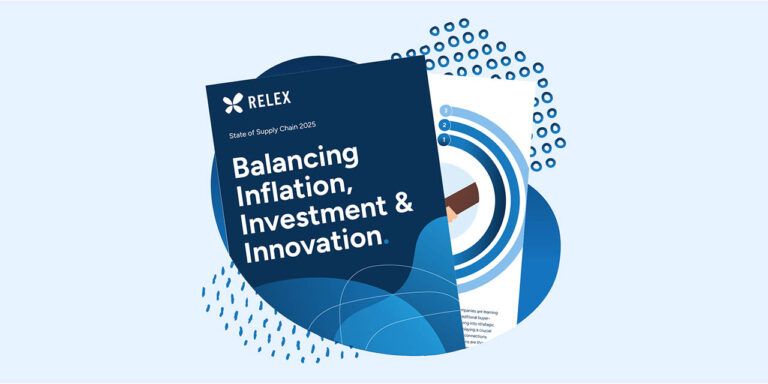A tale of two economies: Success in a bifurcated market
Apr 11, 2025 • 4 min
It is the best of economies, it is the worst of economies. For a minority of Americans, these are prosperous times full of financial opportunity — but for everyone else, the financial pressure is straining the limits of their budgets. The gap between these two economic realities has never been wider, creating not just different consumer behaviors but entirely separate markets.
Many traditional signals of economic health point to a strong economy, but those signals don’t show the whole picture of today’s market. The S&P 500 delivered two back-to-back years of 20%+ returns that haven’t happened for almost 30 years. It’s left many investors’ portfolios up. But investor portfolios don’t show the reality of most Americans — The number of Americans who could cover a $400 emergency with cash continued to decrease from 2022 to 2023, according to Federal Reserve Board data.
The key to business success in this new bifurcated economy is understanding these two very different economic situations.
Understanding the “luxury” economy
The “luxury” economy comprises primarily older, wealthier Americans whose accumulated wealth creates resilience against economic pressures. Baby boomers represent a significant portion of this segment, and their spending patterns remain relatively stable despite broader economic concerns.
Wealth concentration is accelerating. People aged 55 and over have almost three-quarters of all household wealth while making up only 29% of the U.S. population. This wealth concentration creates distinct market dynamics.
This segment maintains or increases spending in key categories — travel, luxury goods, and premium experiences — even as others cut back. Their purchasing decisions are less driven by necessity and more by desire, status, and experience.
The wealth accumulation mechanisms for this group operate as a positive feedback loop. Their substantial investments benefit from strong market returns, capital gains taxed at lower rates than earned income, and intergenerational wealth transfers that perpetuate advantage.
Corporate pricing strategies have further widened the wealth gap. While some price increases were legitimately driven by inflation, many companies expanded profit margins during this period, transferring wealth from everyday consumers to shareholders and investors.
Navigating the “value” economy
For the majority, financial security is deteriorating as inflation outpaces wage growth for many households.
This segment also faces exclusion from key wealth-building vehicles. Lower stock market participation rates mean they don’t benefit from market growth. Reduced homeownership rates among younger generations eliminate this traditional path to wealth accumulation. Retirement savings inadequacy is becoming increasingly common.
Shopping behaviors reflect these financial constraints. We see an increased reliance on ultra-value retailers. Even middle-income shoppers are gravitating toward dollar stores and discount retailers. These value channels are vulnerable to policy changes, such as tariffs and the potential elimination of the $800 duty-free entry threshold for imports.
External forces accelerating bifurcation
Several external forces are widening this economic divide. Tariffs function as headwinds, disproportionately impacting value shoppers. The new 20% tariffs on Chinese imports — along with the 25% tariffs on steel, aluminum, and auto imports from the EU — create greater burdens on price-sensitive U.S. consumers.
Employment uncertainty is paralyzing consumer confidence. Job market stagnation makes finding new positions difficult, creating a negative cycle: People aren’t spending money because they’re worried about whether their jobs will still be available. Meanwhile, facing an uncertain economic future makes many companies reluctant to expand and hire.
Technological disruption compounds these concerns. AI is affecting the job market and roles across industries while companies are still adjusting to pandemic-era workforce expansion. This technological shift adds another layer of economic anxiety that has many in the U.S. pessimistic about the economic outlook.
Make the most of unprecedented times
While many businesses will struggle to adapt to these divergent consumer realities, those that acknowledge the bifurcation and deliberately align their strategies can thrive amid economic uncertainty. The key is implementing a focused approach that addresses both the immediate challenges and positions your organization for long-term success across multiple economic scenarios.
Refine resource allocation
Cost optimization is a competitive necessity in all market segments. Costs will be heavily scrutinized in all business environments. Profit optimization requires enhanced cost focus, with supply chain efficiency benefiting both business models.
Model potential futures
Scenario planning enables nimble responses to volatile conditions. Market conditions can change on a dime or on a dollar. Organizations need to be quick on their feet. Preparation for a range of possibilities creates resilience that competitors may lack.
Foster cross-functional collaboration
Integrated organizational structures eliminate both functional and data silos. Success is not going to come from siloed organizations but requires a flexible, fungible workforce that collaborates with clearly aligned objectives. Breaking down data silos enables holistic insights through digital models or digital twins for scenario testing.
Harness the power of data and AI
Data-driven decision making provides a critical competitive advantage. Leveraging advanced algorithms and AI for predictive capabilities becomes essential when markets are in flux. Being data-driven in your decisions is going to be super critical for navigating uncertainty. For example, you might focus on intelligent pricing decisions backed by high-quality data to better serve consumers strained for cash.
Turn disruption into an advantage
Leaders should adopt an opportunistic mindset during challenging times. View challenges as opportunities to capture market share. All your competitors are facing the same situation as you are, so turn the challenge on its head and capture some market share. Now is the time to do it.
Thriving in a bifurcated market
The most successful companies will transform these challenges into opportunities through superior market understanding. While economic bifurcation presents challenges, it also creates unprecedented clarity about customer needs and motivations.
Companies that attempt to serve both segments with a single undifferentiated approach risk satisfying neither. The bifurcated market rewards strategic clarity and the courage to make deliberate choices about which economic reality your offerings best address. This doesn’t mean businesses can’t serve both segments — many successful organizations do — but rather that each offering must be purposefully designed for its intended economic audience.
Organizations that embrace this reality will discover new paths to growth, even in uncertain times.
To read more about current marketing conditions, download our 2025 report on the state of the supply chain.



